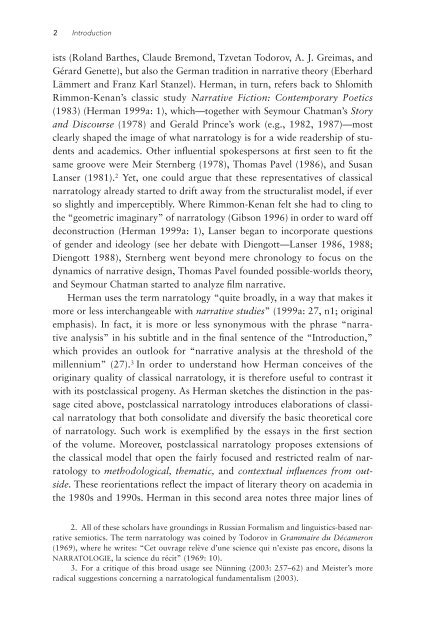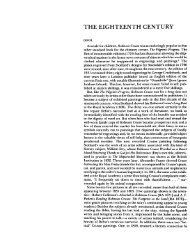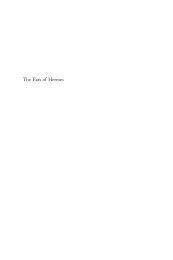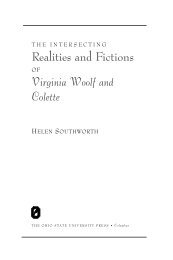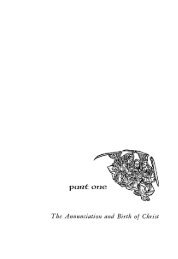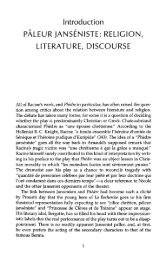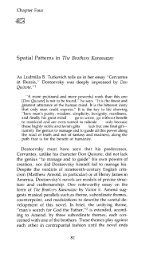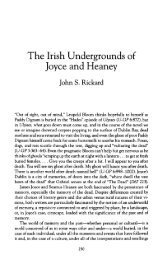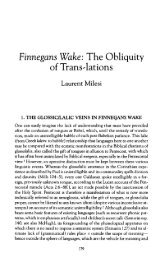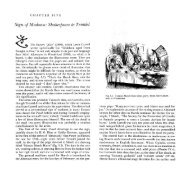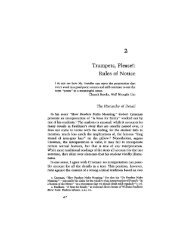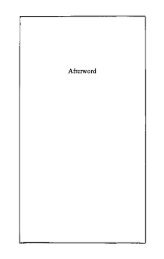Postclassical Narratology: Approaches and Analyses
Postclassical Narratology: Approaches and Analyses
Postclassical Narratology: Approaches and Analyses
You also want an ePaper? Increase the reach of your titles
YUMPU automatically turns print PDFs into web optimized ePapers that Google loves.
2 Introduction<br />
ists (Rol<strong>and</strong> Barthes, Claude Bremond, Tzvetan Todorov, A. J. Greimas, <strong>and</strong><br />
Gérard Genette), but also the German tradition in narrative theory (Eberhard<br />
Lämmert <strong>and</strong> Franz Karl Stanzel). Herman, in turn, refers back to Shlomith<br />
Rimmon-Kenan’s classic study Narrative Fiction: Contemporary Poetics<br />
(1983) (Herman 1999a: 1), which—together with Seymour Chatman’s Story<br />
<strong>and</strong> Discourse (1978) <strong>and</strong> Gerald Prince’s work (e.g., 1982, 1987)—most<br />
clearly shaped the image of what narratology is for a wide readership of students<br />
<strong>and</strong> academics. Other influential spokespersons at first seen to fit the<br />
same groove were Meir Sternberg (1978), Thomas Pavel (1986), <strong>and</strong> Susan<br />
Lanser (1981). 2 Yet, one could argue that these representatives of classical<br />
narratology already started to drift away from the structuralist model, if ever<br />
so slightly <strong>and</strong> imperceptibly. Where Rimmon-Kenan felt she had to cling to<br />
the “geometric imaginary” of narratology (Gibson 1996) in order to ward off<br />
deconstruction (Herman 1999a: 1), Lanser began to incorporate questions<br />
of gender <strong>and</strong> ideology (see her debate with Diengott—Lanser 1986, 1988;<br />
Diengott 1988), Sternberg went beyond mere chronology to focus on the<br />
dynamics of narrative design, Thomas Pavel founded possible-worlds theory,<br />
<strong>and</strong> Seymour Chatman started to analyze film narrative.<br />
Herman uses the term narratology “quite broadly, in a way that makes it<br />
more or less interchangeable with narrative studies” (1999a: 27, n1; original<br />
emphasis). In fact, it is more or less synonymous with the phrase “narrative<br />
analysis” in his subtitle <strong>and</strong> in the final sentence of the “Introduction,”<br />
which provides an outlook for “narrative analysis at the threshold of the<br />
millennium” (27). 3 In order to underst<strong>and</strong> how Herman conceives of the<br />
originary quality of classical narratology, it is therefore useful to contrast it<br />
with its postclassical progeny. As Herman sketches the distinction in the passage<br />
cited above, postclassical narratology introduces elaborations of classical<br />
narratology that both consolidate <strong>and</strong> diversify the basic theoretical core<br />
of narratology. Such work is exemplified by the essays in the first section<br />
of the volume. Moreover, postclassical narratology proposes extensions of<br />
the classical model that open the fairly focused <strong>and</strong> restricted realm of narratology<br />
to methodological, thematic, <strong>and</strong> contextual influences from outside.<br />
These reorientations reflect the impact of literary theory on academia in<br />
the 1980s <strong>and</strong> 1990s. Herman in this second area notes three major lines of<br />
2. All of these scholars have groundings in Russian Formalism <strong>and</strong> linguistics-based narrative<br />
semiotics. The term narratology was coined by Todorov in Grammaire du Décameron<br />
(1969), where he writes: “Cet ouvrage relève d’une science qui n’existe pas encore, disons la<br />
NARRATOLOGIE, la science du récit” (1969: 10).<br />
3. For a critique of this broad usage see Nünning (2003: 257–62) <strong>and</strong> Meister’s more<br />
radical suggestions concerning a narratological fundamentalism (2003).


